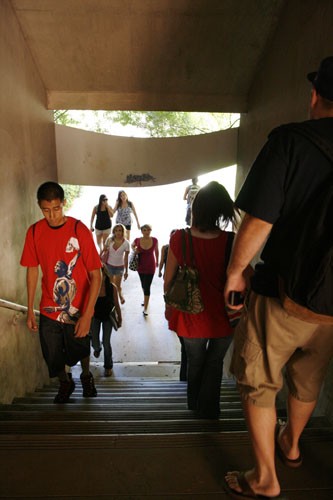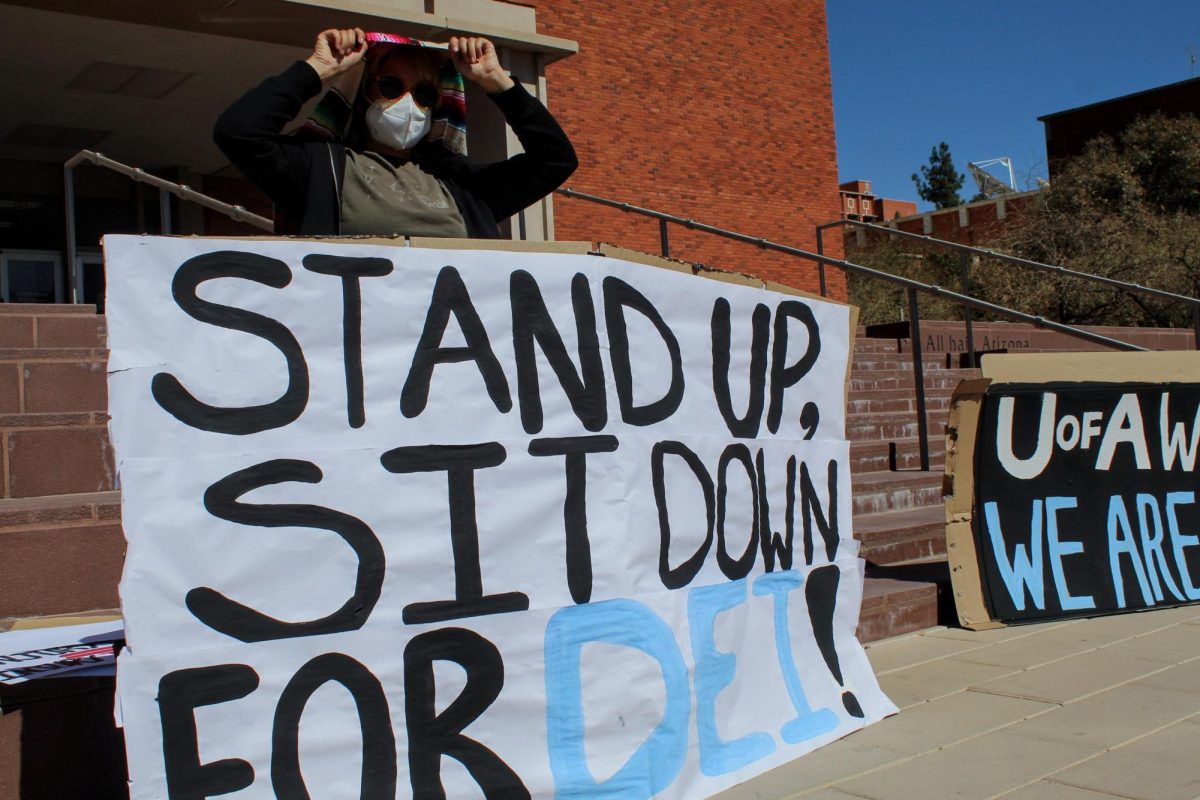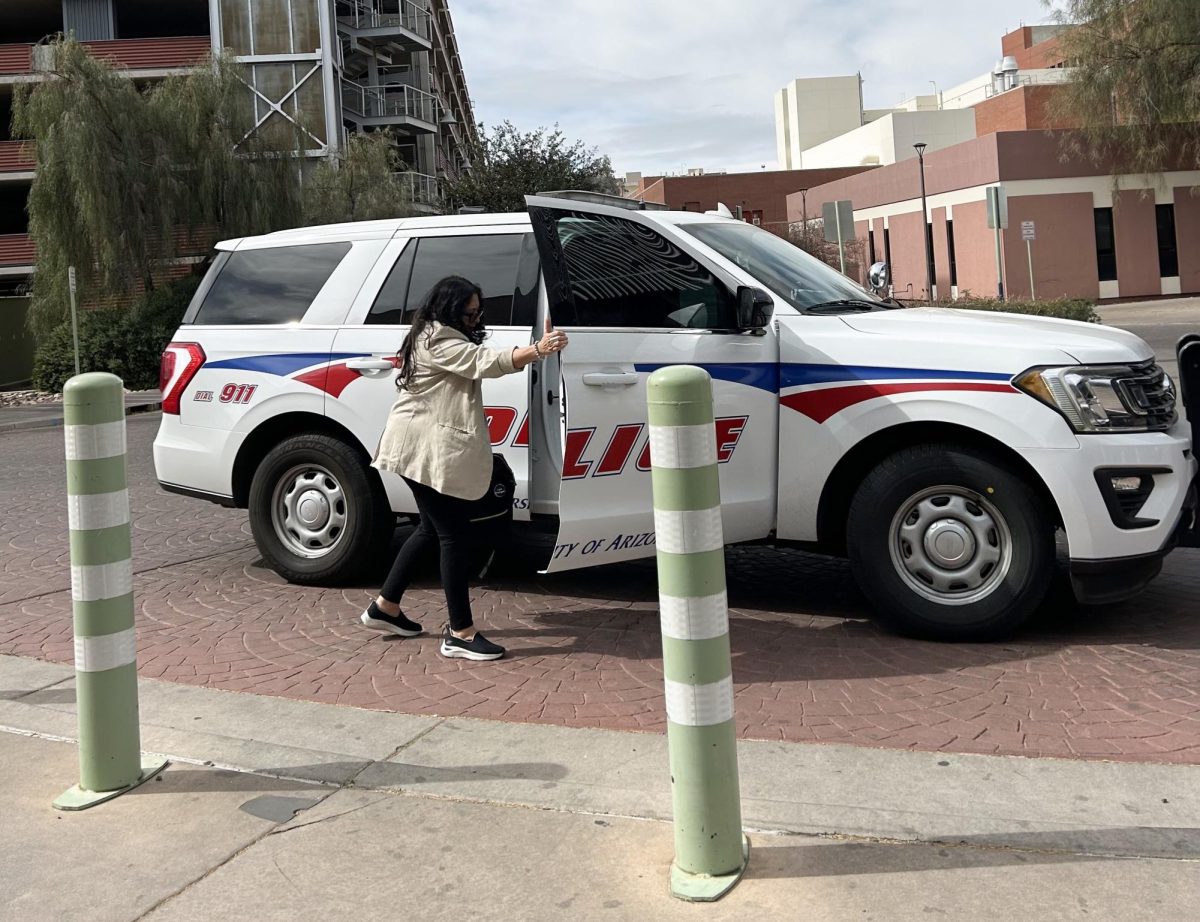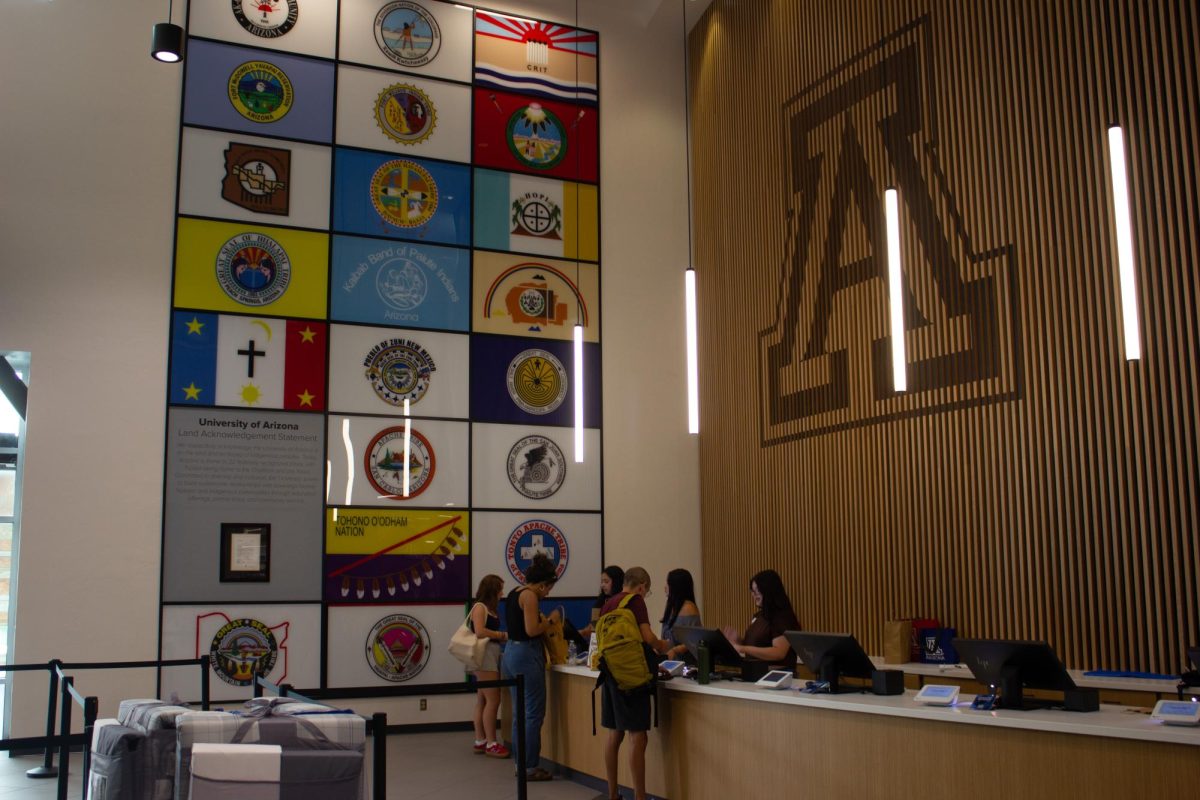Thousands of students who attend class in the Modern Languages building every day should feel safe knowing this older building is fireproofed, even though this fireproofing is made with asbestos materials.
A list on the Department of Risk Management and Safety shows that at least 14 buildings around campus contain asbestos for a variety of purposes.
According to UA’s Department of Risk Management and Safety, asbestos materials pose no threat to building inhabitants if they are left intact. However, there is a potential threat if the materials become damaged and airborne, where inhabitants could inhale them.
“”If you inhale those fibers, because of their strength they don’t break down in the body,”” said Herbert Wagner, associate director of the Department of Risk Management and Safety. “”They attach themselves to the epithelia layer of the lungs and sort of stick there.””
Asbestos is a group of minerals that are very strong and resistant to heat and chemicals. Many older buildings use asbestos materials for fireproofing as well as in insulation pipes, acoustical decorative ceilings, floorings and roofing materials.
“”It does not burn,”” Wagner said. “”It became a very popular building material because of that physical nature.””
The Department of Risk Management and Safety did a survey in the early 1980’s to know where all asbestos materials are located on campus. Wagner said this knowledge could be used to manage disturbances that could occur.
All maintenance personnel on campus are trained to know what asbestos looks like and when to report any kind of disturbance, he said.
“”Anytime that maintenance activities or construction or demolition activities involve disturbing or potentially disturbing the asbestos, we go ahead and have it removed safely by an asbestos company that can come in and safely and properly remove it before we have the opportunity to get involved with it,”” he said.
Since 1975, the Environmental Protection Agency as well as the Occupational Safety and Health Administration have stopped new buildings from using asbestos. The newer buildings on campus have no asbestos and only the older buildings need management, Wagner said.
However, he added, some buildings have beams with fireproofing spray that can be damaged just by hand pressure. These beams are generally not accessible to the general public, he said.
According to the EPA, the asbestos removal process can create a dangerous situation. The agency only requires asbestos removal in the case of a demolition or renovation.
The Modern Languages building, as well as Psychology, no longer have asbestos insulation in the classrooms due to renovations in the late 90’s, but asbestos still exists in other parts of the buildings, said Wagner.
“”It’s a very expensive process to remove and replace that asbestos,”” said Wagner. “”If we could eliminate it that would be the ideal thing, it’s just a matter of having the funds to actually remove it.””
John Sullivan, associate director of the Arizona Poison Center, said there is no risk to students or teachers who are in those buildings.
“”It’s not dangerous at all as long as they’re not friable or broken apart,”” he said. “”If they’re sealed, they’re perfectly fine, they’re safe.””
He also said the fiber has to be small enough to get into the lungs to be a problem.
“”It the size of the fiber that determines whether or not asbestos is a problem, not the existence of it,”” said Sullivan.
Wagner said the people most likely to contract any health problem from the exposure are those in the immediate area at the time of fiber release. He added that sometimes the health problems might not develop for 30 or 40 years after the initial exposure.
Some students are unconcerned by the presence of asbestos in their classrooms.
“”If there is a possible risk of it harming my health, it wouldn’t really make me all that comfortable,”” said undecided sophomore Connor Eustice.
Wagner doesn’t believe it’s necessary to remove all asbestos from the buildings.
“”For the most part no one gets into those areas where the asbestos is to disturb it,”” he said. “”The areas that have that potential to disturb it, we have taken measures to either isolate or encapsulate it.””
***
- BABCOCK HALL – IN MOST ROOMS (BOTH RESIDENTIAL & ACADEMIC)
- CORONADO HALL – ALL ROOMS EXCEPT EAST LOUNGE
- ESQUIRE APARTMENTS – ALL ROOMS EXCEPT MAINTENANCE ROOMS
- HUMANITIES/MLK CENTER – 2ND FLOOR – PART OF HALL AND A FEW ROOMS
- CIVIL ENGINEERING – IN ALL LABS AREAS ON ALL FLOORS
- ENVIRONMENTAL RESEARCH LAB – IN ALL EVEN NUMBERED ROOMS EXCEPT ROOM 114C
- SKY VIEW RESIDENCE HALL – ALL ROOMS AND HALLWAYS
- CORONADO – BEAMS, COLUMNS, DECK & OVERSPRAY-ALL LEVELS
- ADMINISTRATION – BEAMS AND OVERSPRAY-ALL LEVELS
- VETERINARY SCIENCE/MICROBIOLOGY – BEAMS, DECK & OVERSPRAY-ALL LEVELS
- PSYCHOLOGY – BEAMS AND OVERSPRAY-ALL LEVELS
- MODERN LANGUAGES – BEAMS AND OVERSPRAY-ALL LEVELS
- ARCHITECTURE – BEAMS & OVERSPRAY LEVEL 3 ONLY
- USA – BEAMS & COLUMNS ONLY









